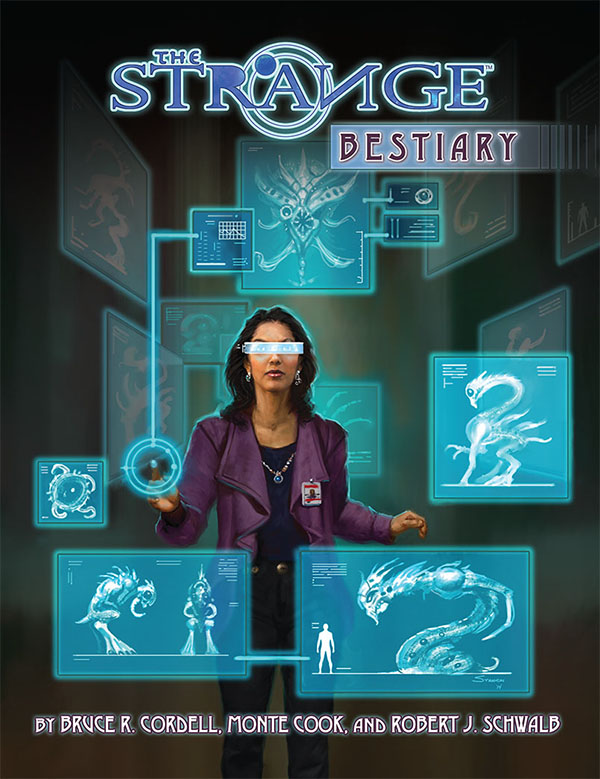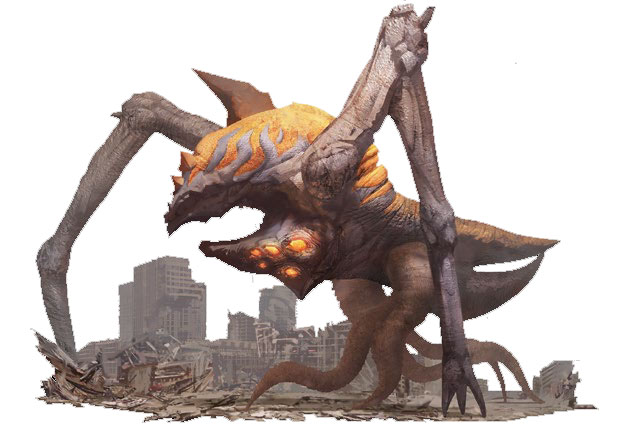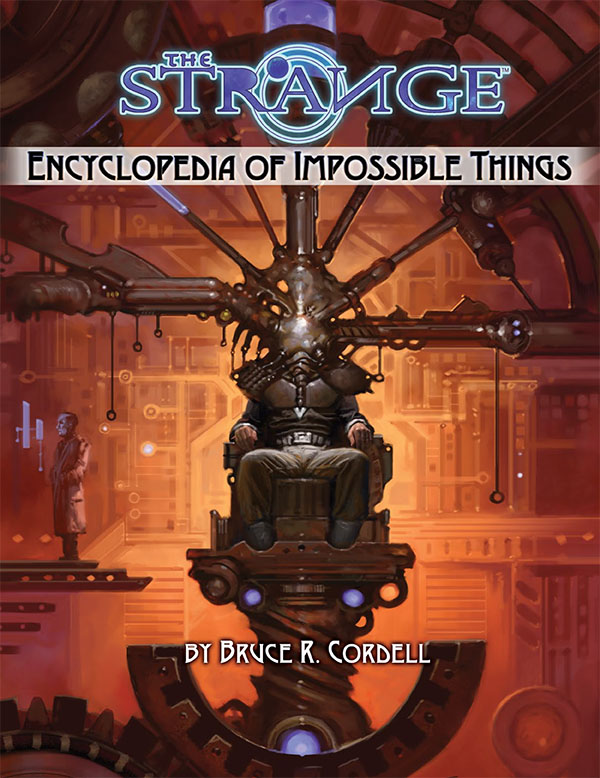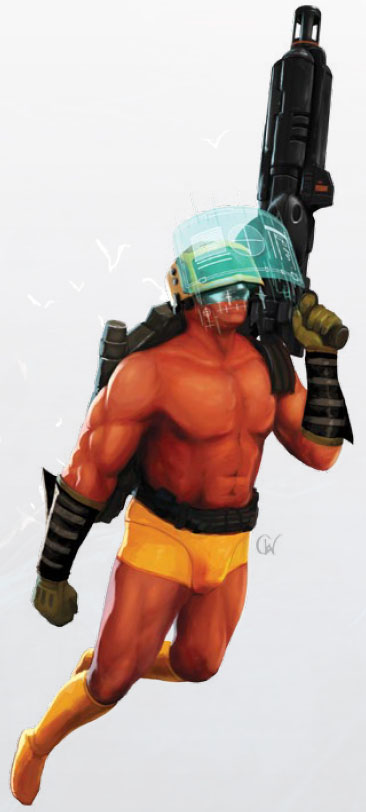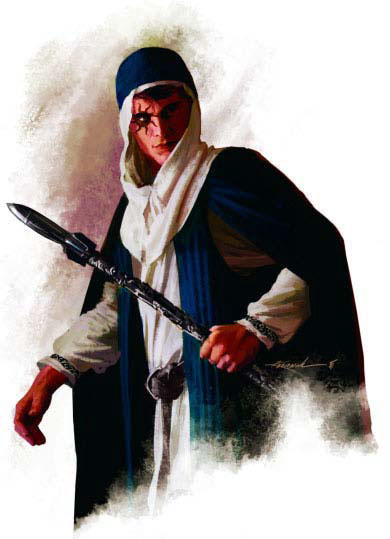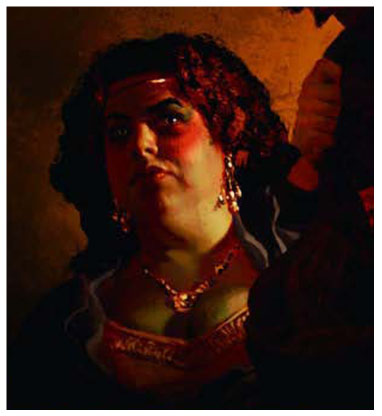IN THE SHADOW OF THE SPIRE
Adding new players to a successful campaign can be really tricky. It doesn’t take much to muck up the strange alchemy that makes for a great group, and that doesn’t even take into account “real world” concerns like discovering that scheduling which was previously hassle-free has stumbled into a nightmare of subtly conflicting schedules that form a real impediment to actually playing.
Auditioning players can help weed out some of these problems. I know some groups will “audition” the new players by just adding them to the existing campaign as a trial run, but I’ve found that this generally causes more problems than it solves. (Even if you manage to cleanly break with a player who’s not working out, you still end up having to deal with the jagged edges of continuity left from introducing a new PC and then, even more importantly, writing them out.) I prefer running a one-shot completely separate from the campaign (although perhaps set in the same campaign world) or even a short mini-campaign that lasts two or three sessions. It allows you to assess how the chemistry of the group will work out, without disturbing the primary campaign in any way.
As I’ve mentioned in the past, of course, an open table is a big help here, largely because a successful open table will leave you with a surfeit of qualified candidates who you’re often eager to play with in a dedicated campaign. There’s no guesswork in determining whether or not someone is a good player because you’ve already seen them play; in fact, you’ve probably already seen them play with the other members of the campaign.
Keeping the difficulties in mind, however, in practice, I just don’t do it. Most of my campaigns sit five players. I generally don’t like going above that number, and if I lose a player (for whatever) reason I’m generally more comfortable letting the number of players slip to four or even three. (This is particularly true with more typical campaigns of 15-25 sessions. Usually easier to just power through to the end.)
Nonetheless, in this session of my Ptolus campaign I found myself adding two new players. I’ve described the reasons for this previously. In brief: Due to the events in Session 7, one of the original long-distance players (Agnarr) had decided to quit; the second long-distance player (Alysta, who had already been having scheduling problems) decided it was a good opportunity to also drop out; and the third long-distance player (Ranthir) had become more-or-less local.
As we regrouped in October 2007, two new players would fill the empty chairs and bring with them two new characters: Tor and Elestra.
TOR
Let’s start with the more traditional addition.
Although I didn’t “audition” either of the new players, I had literally auditioned one of them: She played the role of Abigail Adams in the 2007 production of my play John and Abigail. If I recall correctly, she had not played RPGs before, but was intrigued by the whole concept after chatting about the campaign after rehearsal one night.
I offered her the option of picking up either of the characters who had been abandoned, but as this was her first time at the rodeo she was interested in getting the full experience by creating her own character. Thus was born Master Torland Mank.
This actually ended up being, unintentionally, a great thing for the campaign. Introducing a character who was not directly tied into the mystery of the group’s lost memories ended up pulling the campaign in directions it otherwise would not have gone and anchoring it in ways that, in retrospect, were absolutely essential. Without Tor, it’s likely that everything else the group encountered would have continued playing a second fiddle to the overriding concern of what had happened to them, and much of value would have been lost.
And because Tor’s player was, in fact, fabulous, the roleplaying revolving around Tor’s introduction to the group was amazing (as you’ll see over the course of the next few campaign journals).
So, that’s lesson one here: When looking to add a new character to the campaign, try to find a new dynamic. Add something that the group doesn’t already have — a different perspective on the world, a different social class, a different set of goals, a different set of problems. (At a crude, mechanical level, a different set of abilities.) All of these things should obviously complement the existing group, but in adding a new character you have an opportunity to make the campaign richer than it was before, so take advantage of that.
This applies just as much to a new character created by an existing player.
(We’ve all seen those TV shows where an actor leaves and they replace them with a “new” character is actually just filling the same functional role as the old one, right? And we know that never works, right? The new guy is always just the slightly suckier version of the previous character? Right. So don’t do that.)
Another tricky thing to consider when adding a new PC is the hook: How do they get introduced and (even more importantly) how do they get pulled into the group?
In most cases, even if you completely screw this up the metagame will paper over the gaping cracks: Everybody knows that this is Peter’s new character, so they’ll just kind of “naturally” accept him as part of the group. But it is, in fact, this sort of “go with the flow” tendency which, for me, makes it even more important to not have it be that simple; to have the new addition to the group make sense in character.
(This is also something you can fiendishly invert: Next time Peter needs to roll up a new character, instead ask him to take on the role of an NPC that’s planning to infiltrate the party and betray them for one reason or another. The eventual revelation may do irreparable damage to the group’s metagame trust of the next PC to show up, but it’s worth it.)
In the case of Tor, as you can see in the campaign journal, I was able to take advantage of the PCs’ lost memories to just literally have them hire him. This tied him loosely to the central mystery of the campaign, obviously, and (now that I think about it) kind of hung a lampshade on the whole “of course we trust this guy, it’s Sarah’s new character” thing.
(In point of fact, as you’ll see in the next journal entry, they did not fully trust Tor and ended up concealing their lost memories from him. This is all for the good. A little intra-party friction is good stuff.)
ELESTRA
Elestra’s player was also new to the table, but her character was slightly more unusual. I’ve discussed this in greater detail in the past, but basically Elestra was originally a character named Alysta. And I retconned the campaign so that Alysta was written out and Elestra had been there all along.
I’d never done anything like this before, haven’t done it since, haven’t heard of anyone else who has done it, and will probably never do it again myself.
The reason I did it was relatively straightforward: I’d designed a mystery basically starring these five characters — Agnarr, Tee, Dominic, Ranthir, and Alysta. There was no logical way for Alysta to decide to just… leave. (For a similar reason, Ranthir’s player took on the role of Agnarr and has played both characters simultaneously ever since.)
The existence of a detailed campaign journal actually made this relatively easy: I spent an afternoon or so rewriting the existing campaign journal, replacing all references to Alysta with Elestra. This not only created a new “canon” for the campaign that everyone could agree upon, it also made it easy for Elestra’s player to catch up on all the things that “she” had experienced.
This worked surprisingly well. So well, in fact, that the group basically forgot all about Alysta. I think I speak for all of us when I say that when we think back to the early days of the campaign, we think of them as if Elestra had been there. Until writing this essay, in fact, I don’t think I’d thought about the name “Alysta” in close to a decade. Even Elestra’s player discusses the events of the first seven sessions of the campaign as if she had actually experienced them.
Beyond that, I don’t really have any general lessons to take from this, though: It was kind of a wacky idea. Despite the fact that, against all odds, it somehow worked, I wouldn’t really recommend it as something you should try.


